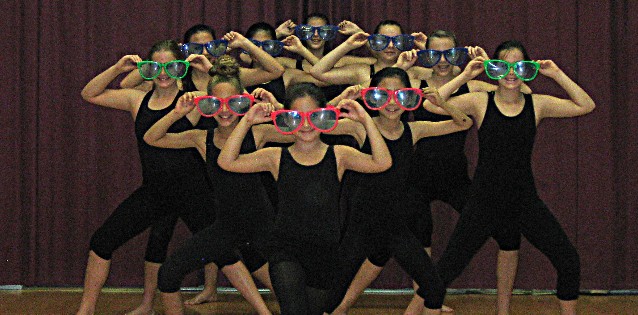The Pamela Trokanski Dance Theater (PTDT) mixes dancers of every age, skill and experience level with a unique theatrical narrative to explore a theme. This year’s season opener, “Learning to See”, marks the company’s 30th active year.
Trokanski founded the local studio and the three companies (PTDT, Apprentice Company and Third Stage Company) that come together for performances. A storyteller herself, Trokanski finds that narration through dance has a unique impact on the viewers as well as the performers.
“[This season’s opener] is all about learning to see the world around us, what we think we see and how we fool our eyes,” Trokanski said. “It’s an honest experience with what seeing is and what that understanding means in the mind and the world… The concert will have a different impact on audience members based off of where they are in life.”
Trokanski’s narratives follow a non-linear scheme, mixing her own stories with stories written by the dancers about their personal life experiences. She gives her dancers prompts that pertain to specific landmark moments and instances in their lives to write about.
From there, Trokanski weaves the body of stories together into a cohesive piece. The show’s audio alternates between music and the recorded voices of dancers telling their stories, with dancing taking place during both kinds of audio.
Michele Tobias, a post-doctorate in the department of environmental science and policy, PTDT board of directors member and dancer, finds the collaboration between dancer and choreographer emotionally connecting.
“The spoken text from the dancers gives a depth to the text that otherwise wouldn’t be there. You’ll hear from people at a range of life stages and I think that the audience will find more connections with the text that way,” Tobias wrote in an email interview.
Allegra Silberstein, Davis’ first Poet Laureate and Third Stage dancer, finds that the personal storytelling adds another layer to an already complex choreographic undertaking.
“I love hearing the spoken narratives of the other dancers and I think this adds so much to Pamela’s shows,” Allegra wrote in an email interview. “She has always been known as an innovative choreographer, and this is one more thing to admire.”
Silberstein is one of the oldest dancers performing.
“At age 83, I am delighted to be a part of this show … I am grateful that Pamela has dancers from eight to 83,” Silberstein said.
The age variety among dancers is embraced by Trokanski, who sees the differences in ability and in life perspective as valuable assets to the show.
“One of my youngest dancers is eight, and her voice tells a completely different story than Allegra,” Trokanski said. “Back in the day, if I was going to tell a story, the adult figures were tall dancers, and shorter dancers were the kids. Once we began having dancers in their 60s and 70s, they could represent that aspect of life in a much [more visceral and] honest way.”
Sara Delorena, a Sacramento State University sociology graduate and third-year dance major at UC Davis, believes that all audience members will find something to connect with.
“Everyone can enjoy and connect to the stories. This company is unique in that we are all different ages, so there is something to learn from everyone,” Delorena said. “The full scope of emotions are drawn upon. There’s always humor, something sentimental. Musically, based on the stories and characters — everyone will find something to connect with.”
In addition to unique storytelling, the dance choreography itself sets PTDT apart. With a stage that is deeper than it is wide, dancers are able to participate in complex choreography.
“Our space allows for more layering of dancers. We can have pieces with five or six rows of dancers,” Tobias wrote. “You can’t do that in a traditional stage and have people doing big movements.”
Much of the unique and varied dance styles seen in the concerts comes from Trokanski’s personal background.
“When I started training in my 20s, I studied modern, I studied ballet, I studied bellydancing, I studied breakdancing; I was curious about [how I went from being very shy to] feeling very different when I was dancing,” Trokanski said.
This exploration of style has changed and expanded over the years, resulting in Trokanski challenging dancers to think outside the confines of one genre to express themselves.
“I love the concerts, the dancing, the people, the messages,” Delorena said. “This company is the reason I’m majoring in dance.”
“Learning to See” will premiere at the Pamela Trokanski Dance Workshop and Performing Arts Center on Sunday at 3 p.m. and Nov. 14 and 15 at 8 p.m. Tickets are available online at brownpapertickets.com/event/887684.
Photo courtesy Pamela Trokansk




